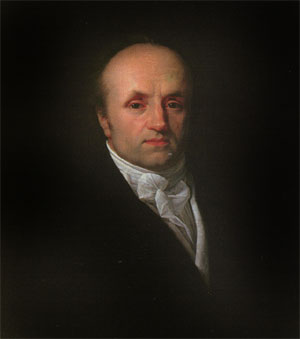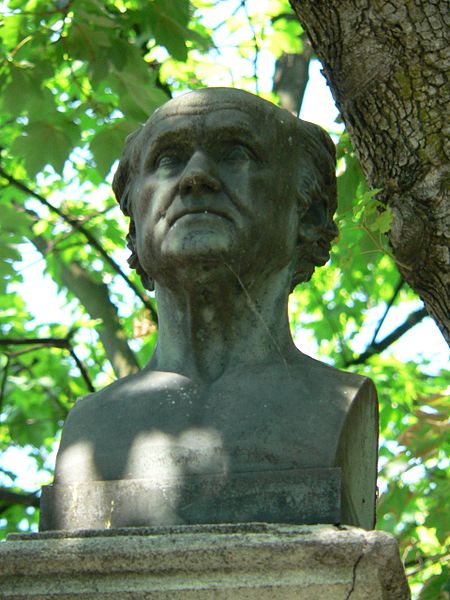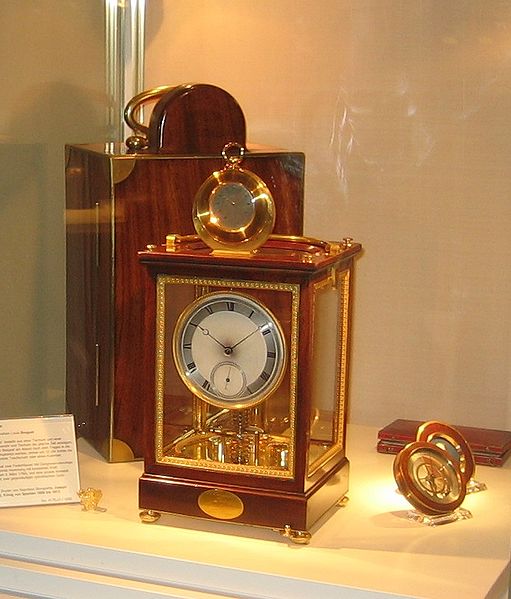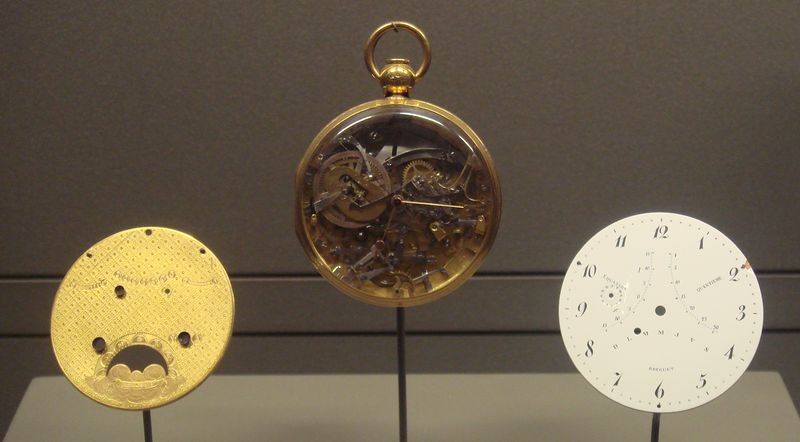<Back to Index>
- Horologist Abraham Louis Breguet, 1747
- Painter Johannes Zick, 1702
- Governor of the Principality of Orange Louis of Nassau, 1538
PAGE SPONSOR



Abraham-Louis Breguet or Bréguet (10 January 1747 – 17 September 1823), born in Neuchâtel in Switzerland, was a horologist who made many innovations in the course of a career in watchmaking in France. He is the founder of Swiss luxury watch brand Bréguet. Breguet
was born to Jonas - Louis Breguet and Suzanne - Marguerite Bollein. After
his father's death in 1758, Breguet's mother remarried Joseph Tattet, who came from a family of watchmakers. Tattet had a showroom in Paris and
in 1762 Breguet was sent there to be apprenticed to an unknown master
as a watchmaker. Breguet was allowed to marry in 1775 after finishing
his apprenticeship. He and his bride, Cécile Marie - Louise
L'Huillier, set up their home and the Breguet watchmaking company at 39 Quai de l'Horloge in Île de la Cité in Paris. Breguet invented different escapements, including the tourbillon,
automatic winding mechanisms, and the overcoil (an improvement of the
balance spring with a raised outer coil). Within ten years Breguet had
commissions from the aristocratic families of France and even the
French queen, Marie - Antoinette. Cécile died in 1780. He met Abraham - Louis Perrelet in Switzerland and became a Master Clockmaker in 1784. In 1787 Abraham - Louis established a partnership with Xavier Gide, which lasted until 1791. During the stormy years of the French Revolution (1789 – 1792), Breguet went into exile in Geneva.
His associations with the French monarchy and aristocracy made him a
likely target. In 1795, however, Breguet returned to Paris with many
ideas for innovations in watch and clock making. He set up business
again in Quai de l'Horloge and quickly established a reputation among
the new wealthy classes in the Empire. Breguet did not man his
workshops in the traditional way, with unskilled apprentices. Instead,
he sought out the finest available craftsmen in Paris, who he employed
to make watches to his own designs. In the early 19th century Breguet
took his son, Louis - Antoine, as a business partner after having sent
him to London to study with the great English chronometer maker, John Arnold.
Such was the mutual friendship and respect between the two men that
Arnold, in turn, sent his son, John Roger, to spend time with Breguet.
Breguet met another watchmaker Louis Moinet and
recognised his worth at once, and the two men worked closely together.
From 1811 on, Louis Moinet became Breguet's personal adviser. Breguet became a member of the Board of Longitude in 1814 and the following year gained an official appointment as chronometer - maker to the French Navy. He entered the French Academy of Sciences in 1816 as a full member, and received the Chevalier of the Legion of Honour from the hands of Louis XVIII in 1819. Breguet's name is one of the 72 names inscribed on the Eiffel Tower. The business grew from strength to strength, and when Abraham - Louis Breguet died in 1823 it was carried on by Louis - Antoine. Early enthusiasts of Breguet's watchmaking were also Louis XVI and his Queen, Marie - Antoinette. It was one of his pocket watches called the 'Marie Antoinette'
which he produced for the Queen and had the most mechanical
complications at that period. It was finished 4 years after Breguet's
death and many more after that of the Queen. Breguet designed his most
remarkable piece, anticipating, together with his friend John Arnold,
the wristwatch by two centuries for Caroline Bonaparte,
Queen of Naples, in 1810. Many honours recognised his enormous
contribution to horology. Each watch from his workshops demonstrated
the latest horological improvements in an original movement, mostly
fitted with lever or ruby - cylinder escapements that he perfected.
Breguet took refuge in Switzerland from the excesses of the French Revolution. He returned to Paris overflowing with the ideas that produced the Breguet balance - spring, his first carriage clock (sold to Bonaparte), the sympathique clock and its dependent watch, the tact watch, and finally the tourbillon, patented in 1801. Apart from the very start of his career, Abraham - Louis Breguet almost always used the calibres of the celebrated Jean - Antoine Lépine, which he transformed. His watches and clocks are widely regarded as some of the most beautiful and technically accomplished. Generally speaking, Abraham - Louis Breguet was distinguished by the highest attention paid to aesthetic watch design.
